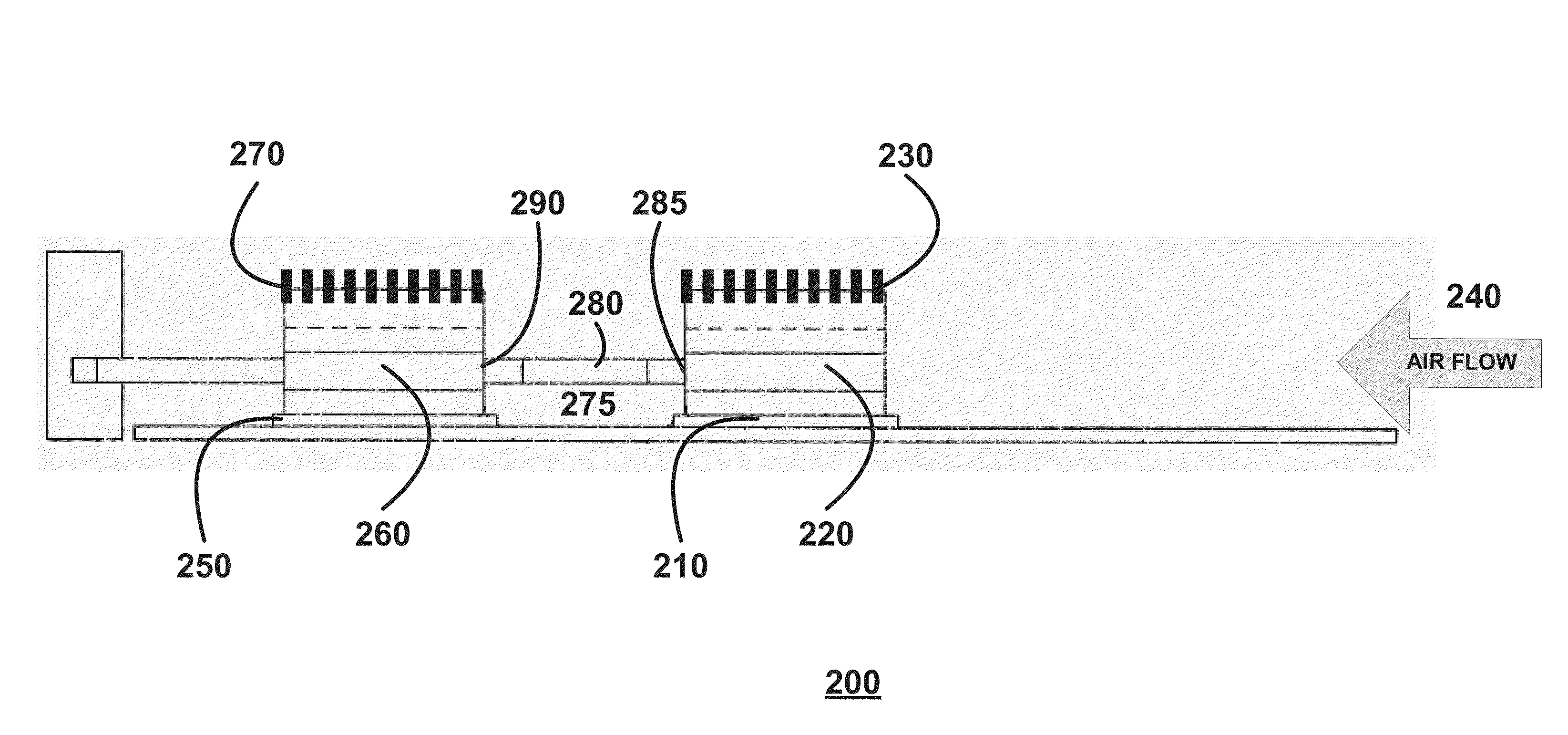System for cooling multiple in-line central processing units in a confined enclosure
a technology for central processing units and cooling systems, applied in the direction of electrical apparatus construction details, instruments, casings/cabinets/drawers, etc., can solve the problems of cpus being forced to sacrifice the overall system performance, increase enclosure temperature, and reduce the performance of cpus, so as to improve the overall system performance and reliability, reduce the amount of air flow, and provide cost-effective
- Summary
- Abstract
- Description
- Claims
- Application Information
AI Technical Summary
Benefits of technology
Problems solved by technology
Method used
Image
Examples
Embodiment Construction
[0016]A system for cooling multiple in-line CPUs in a confined enclosure is provided. The cooling system of the present invention provides for improved overall system performance and reliability in computer systems employing multiple in-line CPUs in a confined enclosure such as a server tray or server blade. The system does so primarily by better equalizing the temperature of the leading CPU and the trailing CPU, reducing the temperatures on the trailing CPU. This is accomplished by reducing the amount of air flow that would otherwise be physically blocked by the heat sink of the front CPU as the air flow travels towards the heat sink of the rear CPU. It can also be achieved by physically connecting the two (or more) heat sinks with flexible heat pipes or the two approaches can be combined. The system provides the cost-effectiveness of traditional air cooling systems (as opposed to expensive liquid cooling systems) without requiring the use of an external radiator or fan. Because th...
PUM
 Login to View More
Login to View More Abstract
Description
Claims
Application Information
 Login to View More
Login to View More - R&D
- Intellectual Property
- Life Sciences
- Materials
- Tech Scout
- Unparalleled Data Quality
- Higher Quality Content
- 60% Fewer Hallucinations
Browse by: Latest US Patents, China's latest patents, Technical Efficacy Thesaurus, Application Domain, Technology Topic, Popular Technical Reports.
© 2025 PatSnap. All rights reserved.Legal|Privacy policy|Modern Slavery Act Transparency Statement|Sitemap|About US| Contact US: help@patsnap.com



